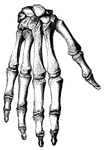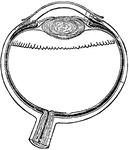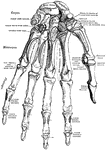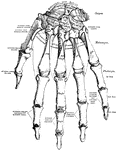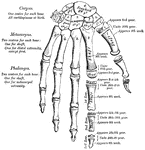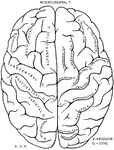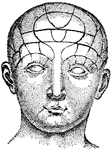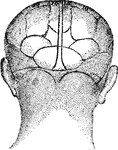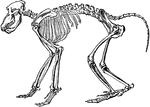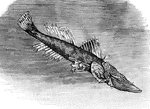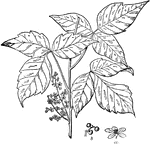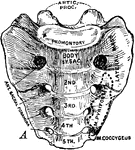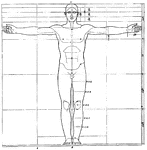
Proportions of human figure
"The proportions of the human figure. As handed down to us by Vitruvius and described by Joseph Bonomi."…

Relief of Trajan Column
"The column was originally surmounted by a colossal statue of Trajan (replaced in the seventh century…

Swordfish
A family of spinyrayed fished allied to the mackerels. They attain a length of fifteen feet, and have…

Human Eye
This diagram shows a side view of the right eye of man. a.c., central artery; a.h., aqueous humor; b.,…

Forearm Bones
This diagram shows the bones of the right fore-arm. H, the humerus; R, the radius; and U, the ulna.

Muscles
A frontal view of the human muscles. The right half shows superficial muscles and the left half shows…
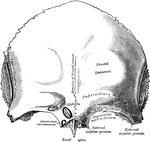
Frontal Bone
A bone in the human skull that consists of two portions, a vertical portion and a horizontal portion.…
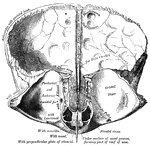
Frontal Bone
A bone in the human skull that consists of two portions, a vertical portion and a horizontal portion.…
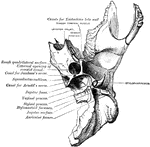
Temporal Bone
Bones situated at the sides and base of the skull. Each consists of five parts: the squama, the petrous,…
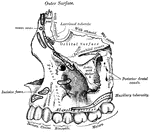
Maxilla
The largest bones of the face, excepting the mandible, and form, by their union, the whole of the upper…
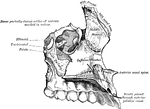
Maxilla
The largest bones of the face, excepting the mandible, and form, by their union, the whole of the upper…

Blood Corpuscles
"Blood corpuscles (human). c, colored; l, leucocytes. The red cells tend to collect in rows with the…
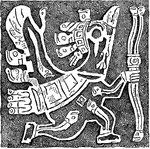
Bas-Relief
Winged human figure with the crowned head of a condor, from the central row on the monolithic doorway.…
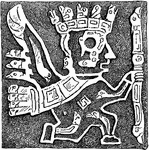
Bas-Relief
A winged human figure with human head crowned, from the upper row on the monolithic doorway. Details…

Skull
The outer outline is that of the skull found in the cave of Cromagnon, in France, belogning, as Dawson…
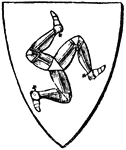
Charge
Human legs are not unfrequently born as charges in Heraldry, sometimes naked, sometimes booted, and…

Magnified Louse
"A genus of insects, the type of a very numerous family, which forms the order Parasita or Auoplura.…

Oannes
"The name of a Babylonian god, who, in the first year of the foundation of Babylon, is said to have…
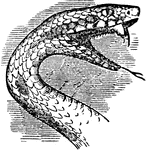
Serpent Head
"The prey of a serpent is oven thicker than the serpent itself, and to admit of its being swallowed,…
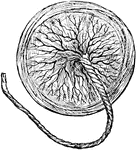
Human Placenta
The organ of attachment of a vertebrate embryo or fetus to the wall of the uterus or womb of the female.

Abdomen
"The Abdominal Viscera in situ, as seen when the abdomin is laid open and the great omentum…

Polypterus Skull
"Upper aspect of the primordial cranium, with the membrane-bones removed. An, angular; ao, anteorbital;…

Polypterus Skull
"Lower aspect of the primordial cranium, with the membrane-bones removed. An, angular; ao, anteorbital;…

Polypterus Skull
"Side view, with the membrane-bones. An, angular; ao, anteorbital; Ar, articulary; B, basal; D, dentary;…

Polypterus Skull
"Lower aspect of the skull, part of the bones being removed on the side. An, angular; ao, anteorbital;…
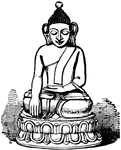
Buddha
"The sacred name of the founder of Buddhism, an Indian sage who appears to have lived in the 5th century…

Vulture Skeleton
"Skeleton of Egyptian Vulture. (Neophron percnopterus), to show bones of bird. a, post-orbital process;…
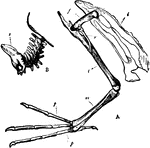
Diver Bones
"A. Pelvis and bones of the leg of the Leon or Diver; i, Innominate bone; f, Thighbone (femur); r, Tibia;…
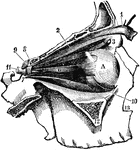
Eye Muscles
"The external bones of the temple are supposed to be removed in order to render visible the muscular…

Earring
"The earring is an exquisite illustration of Greek skill in the introduction of the human figure; the…
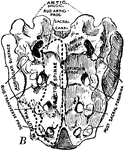
Human Sacrum
A large triangular bone as the base of the spine. Resides in between the two hip bones.
Arm Bones
"The bones of the arm. a, humerus; b, ulna; c, radius; d, the carpus; e, the fifth metacarpal; f, the…

Leg Bones
"Bones of the leg. a, femur; b, tibia; c, fibula; d, tarsal bones; e, metatarsal bones; f, phalanges;…
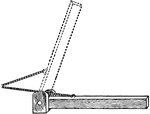
Oblique Pull
"It is worthy of note that, owing to the oblique direction in which the muscles are commonly inserted…

Mouth
"The mouth, nose and pharynx, with the commencement of the gullet and larynx, as exposed by a section,…
